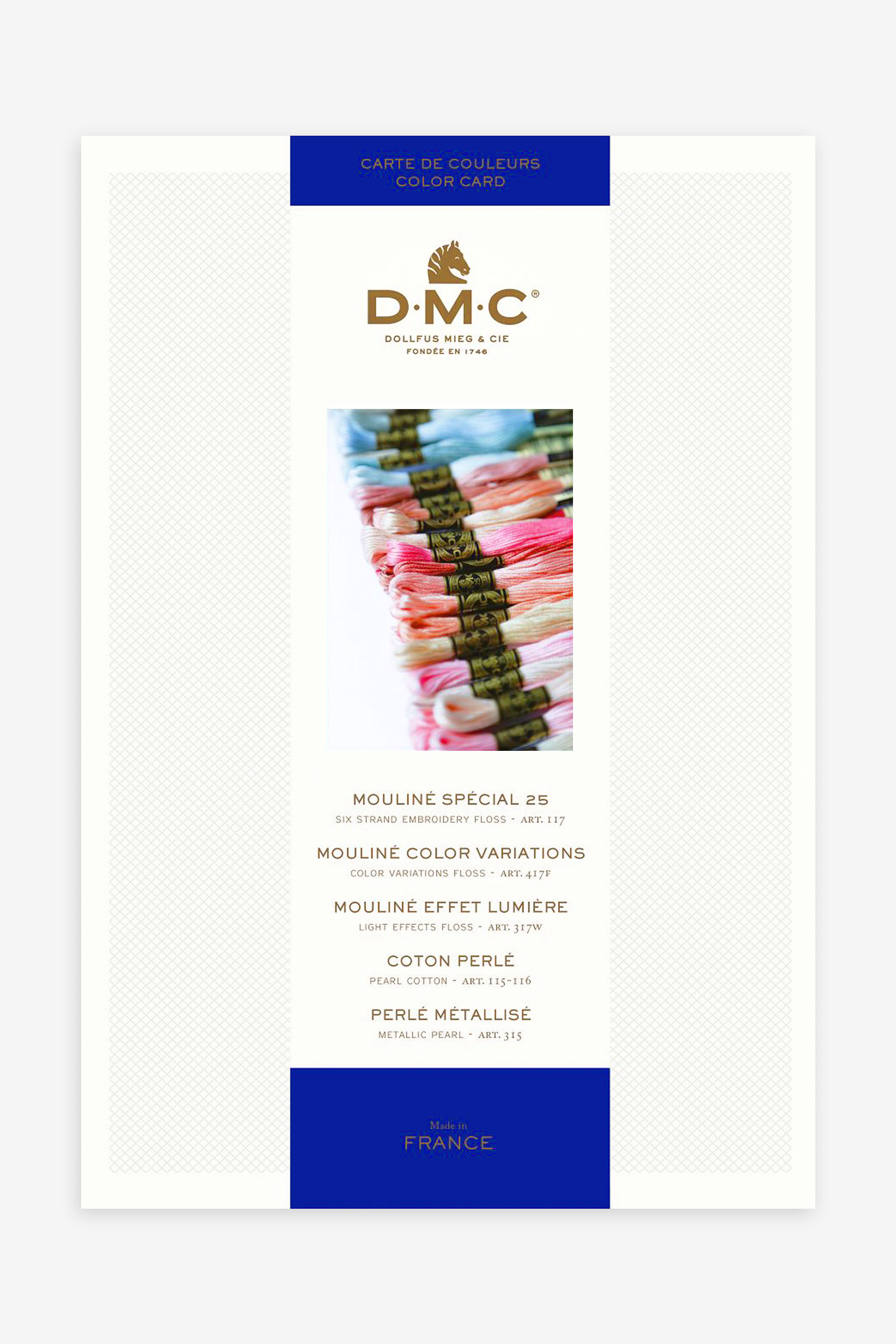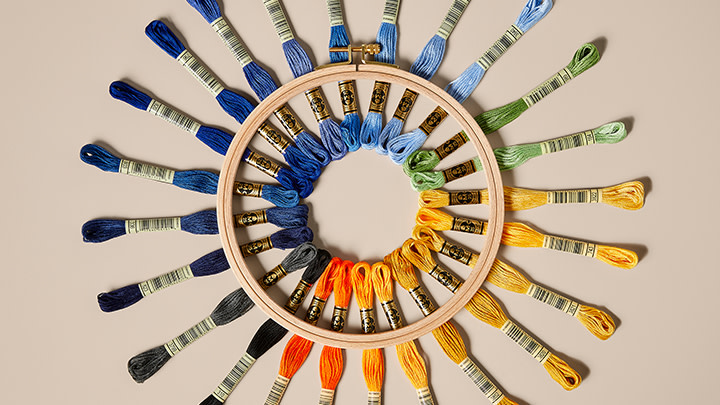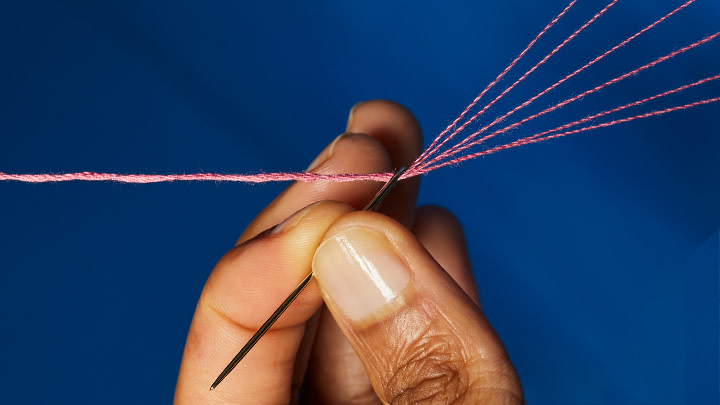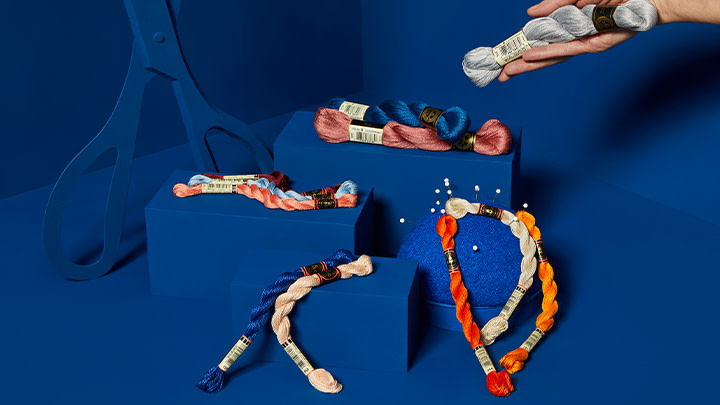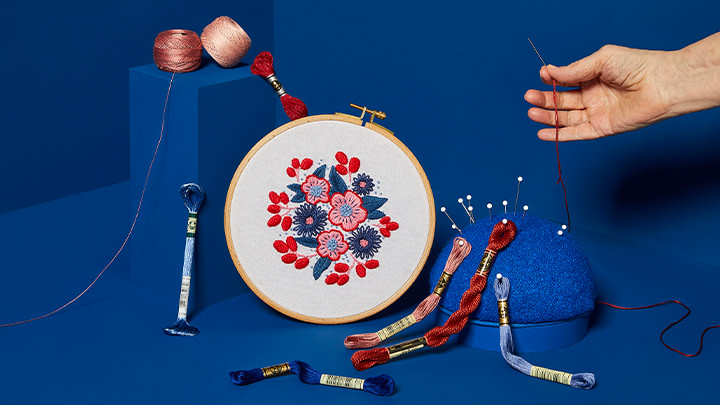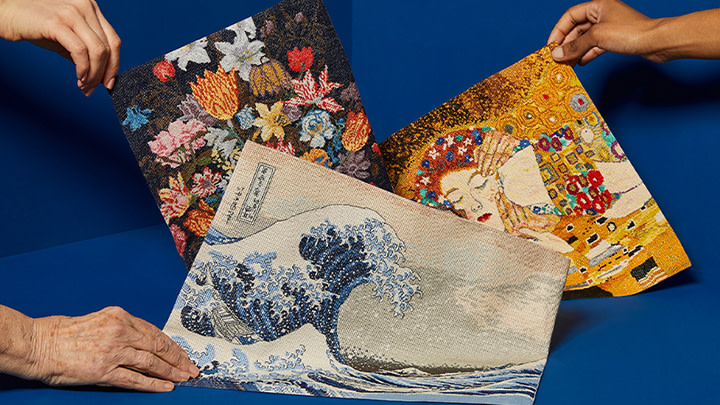Pantone has released Peach Fuzz as its colour of the year 2024, which means peach will be on trend in 2024. If you are excited to add shades of peach to your embroidery, you might also want to find a palette of colours that look great with peach. Choosing colours is one of the most enjoyable and difficult aspects of embroidery. In this article, we explain how to use a colour wheel and shade families to choose colours that work well together and how to choose the perfect shades to add highlights and shadows to your work.
How to choose colours for embroidery using a colour wheel
By Helen Bradley
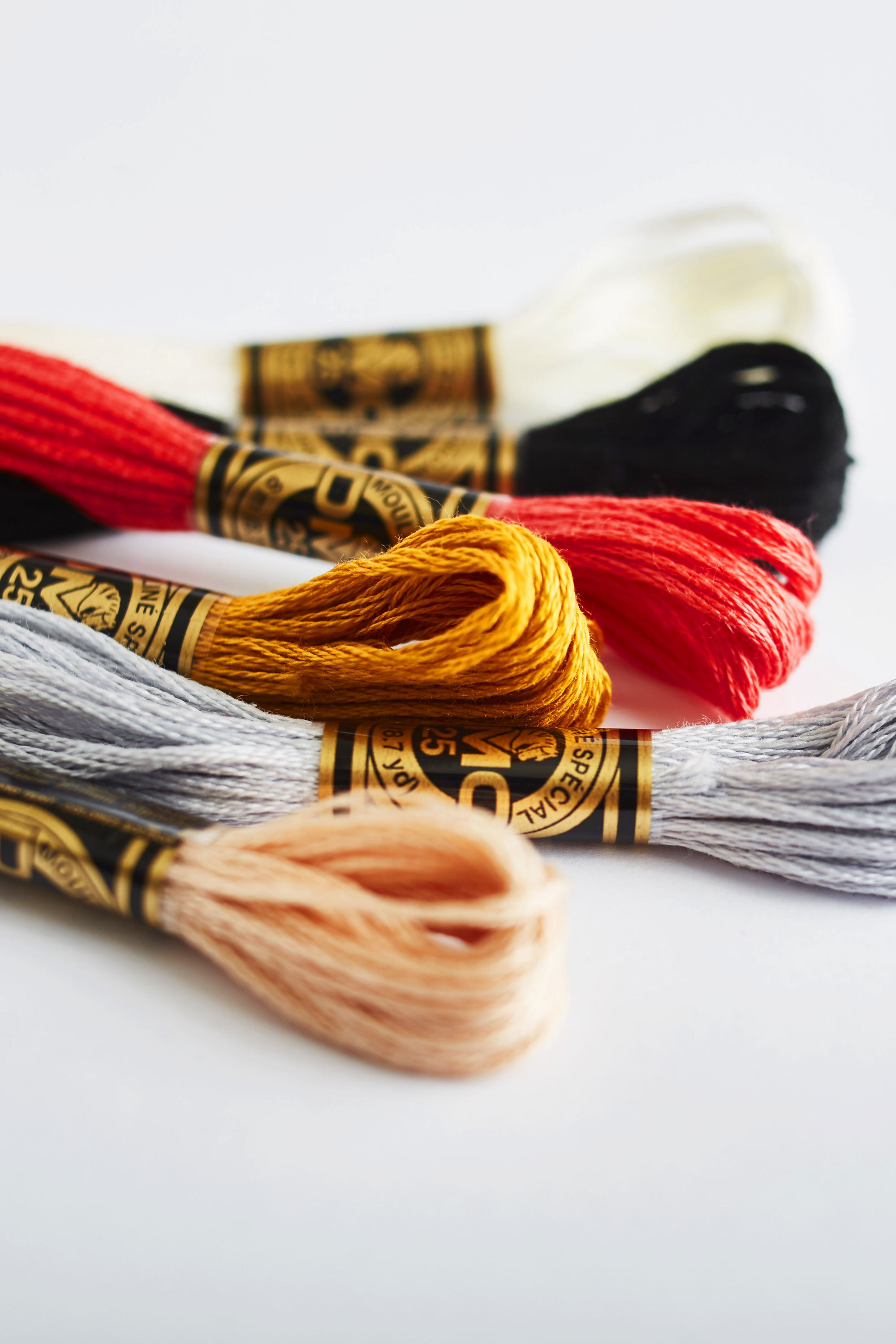
- +499 shades available
- +501 shades available

- +325 shades available
- +327 shades available

- +499 shades available
- +501 shades available

- +325 shades available
- +327 shades available
What is a colour wheel?
A colour wheel is a way of organising colours to help understand the relationship between them. The primary colours - red, blue and yellow are spaced out evenly around a circle. Then secondary colours, green, violet and orange which are made by mixing two of the primary colours are added between the primary colours. For example, yellow and blue make green so green sits between yellow and blue on the colour wheel. Next, the tertiary or intermediate colours yellow-green, green-blue, blue-violet, red-violet, red-orange and yellow-orange which are created by mixing a primary colour and a secondary colour, are added between them. Here is a simple example of a colour wheel made from primary, secondary and tertiary colours of Mouliné Spécial.
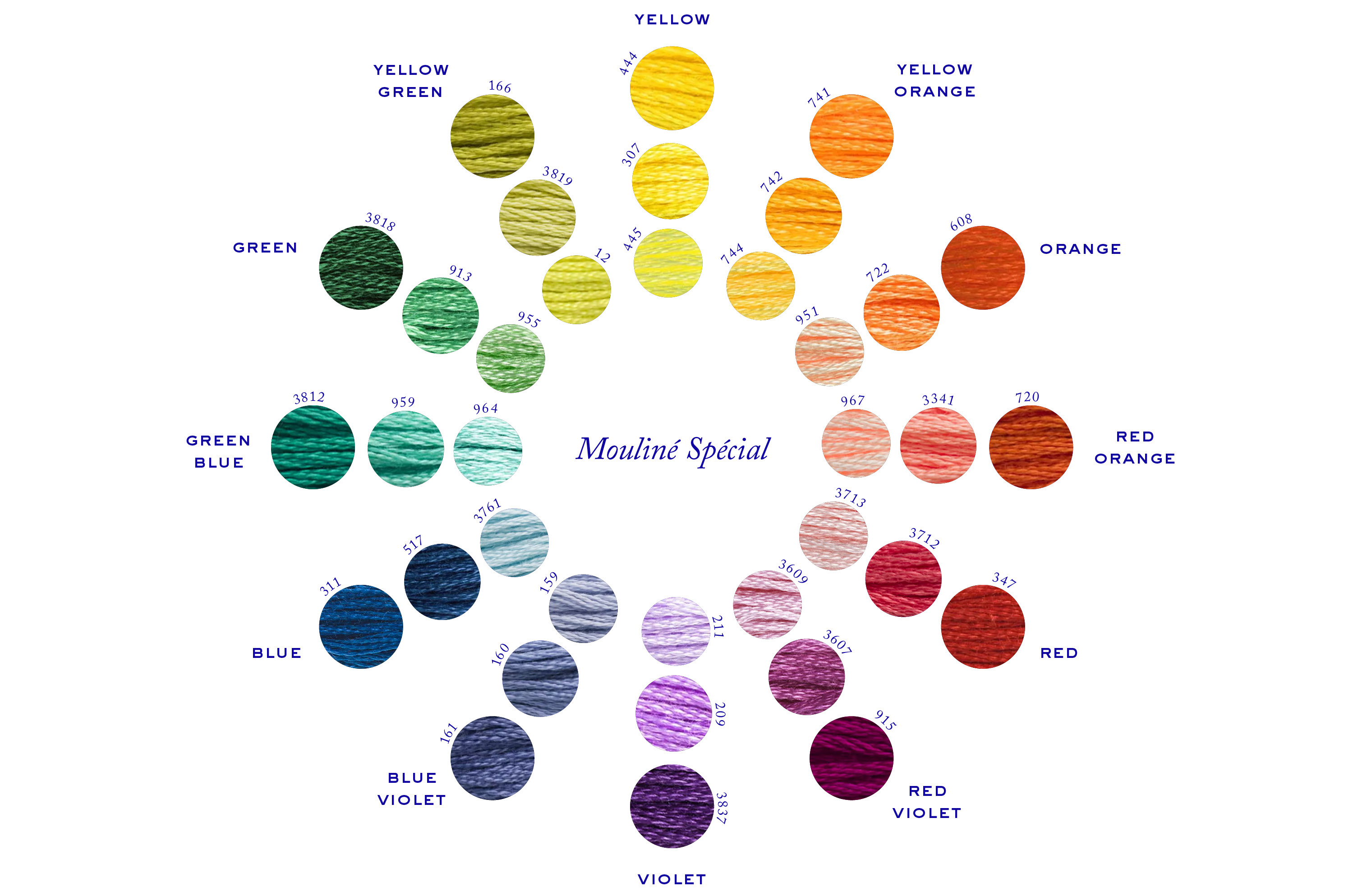
What are colour families?
Colour families are created when you have lighter and darker shades of the same colours. Using colour families can help you choose colours to add shading, highlights and colour blends to your embroidery. The DMC Thread Colour Cards are arranged in colour families to make it easier to find light, medium and dark tones of a colour. To create the colour wheel above we used three tones from 12 DMC colour families. But with over 600 colours there are lots of other families to explore.
How to create a colour palette inspired by peach fuzz
Shades from colour families that are next to each other or directly opposite each other on a colour wheel will always work well together. We’ve used a peach as the base for all these palettes and have chosen different shades within families that are analogous (next to each other) and direct or complementary (opposite each other).
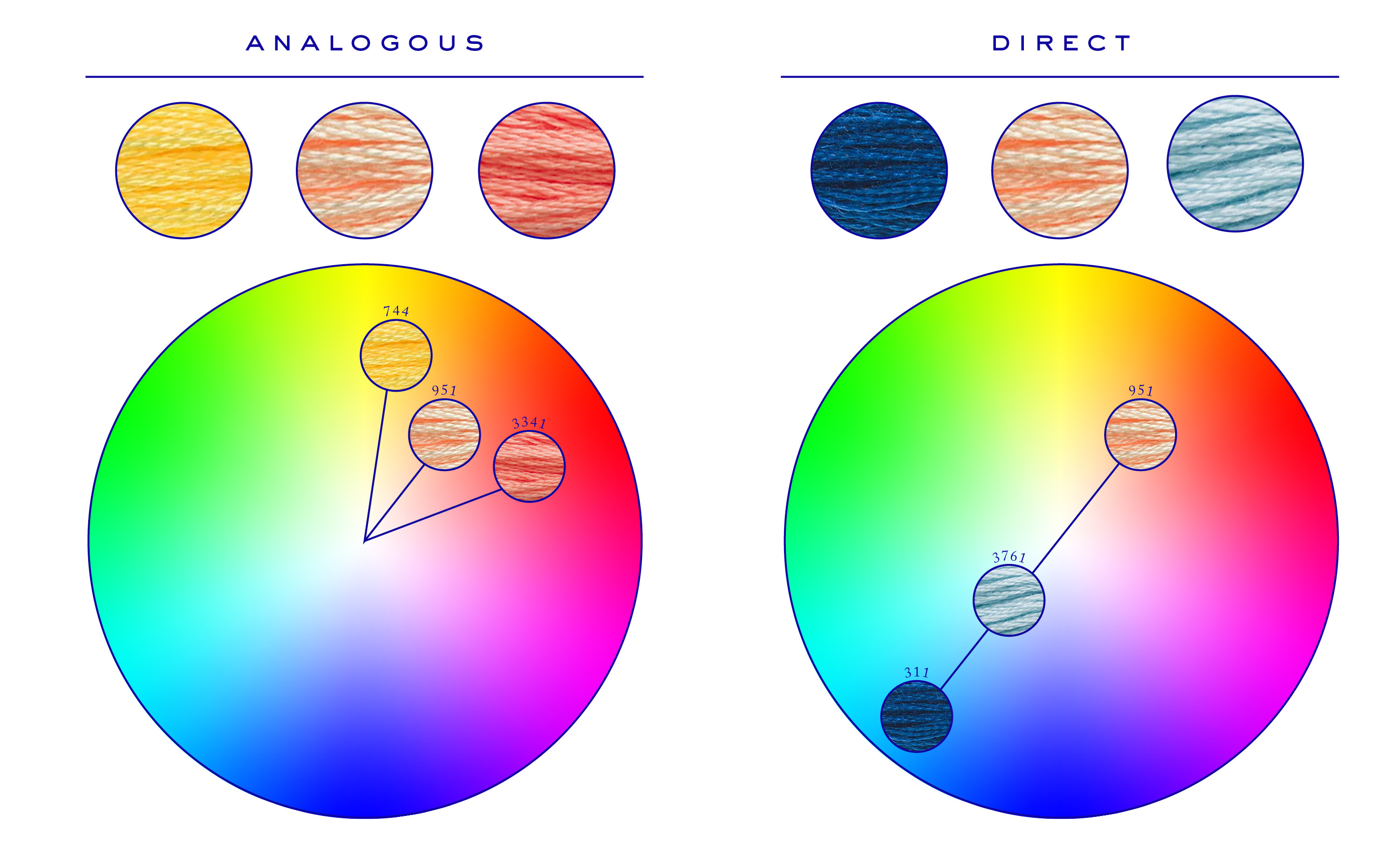
You can also create a triadic colour scheme (three colours that are equally spaced around the wheel.) To find triadic colours try drawing a triangle with three equal sides to connect any three colours on the colour wheel.
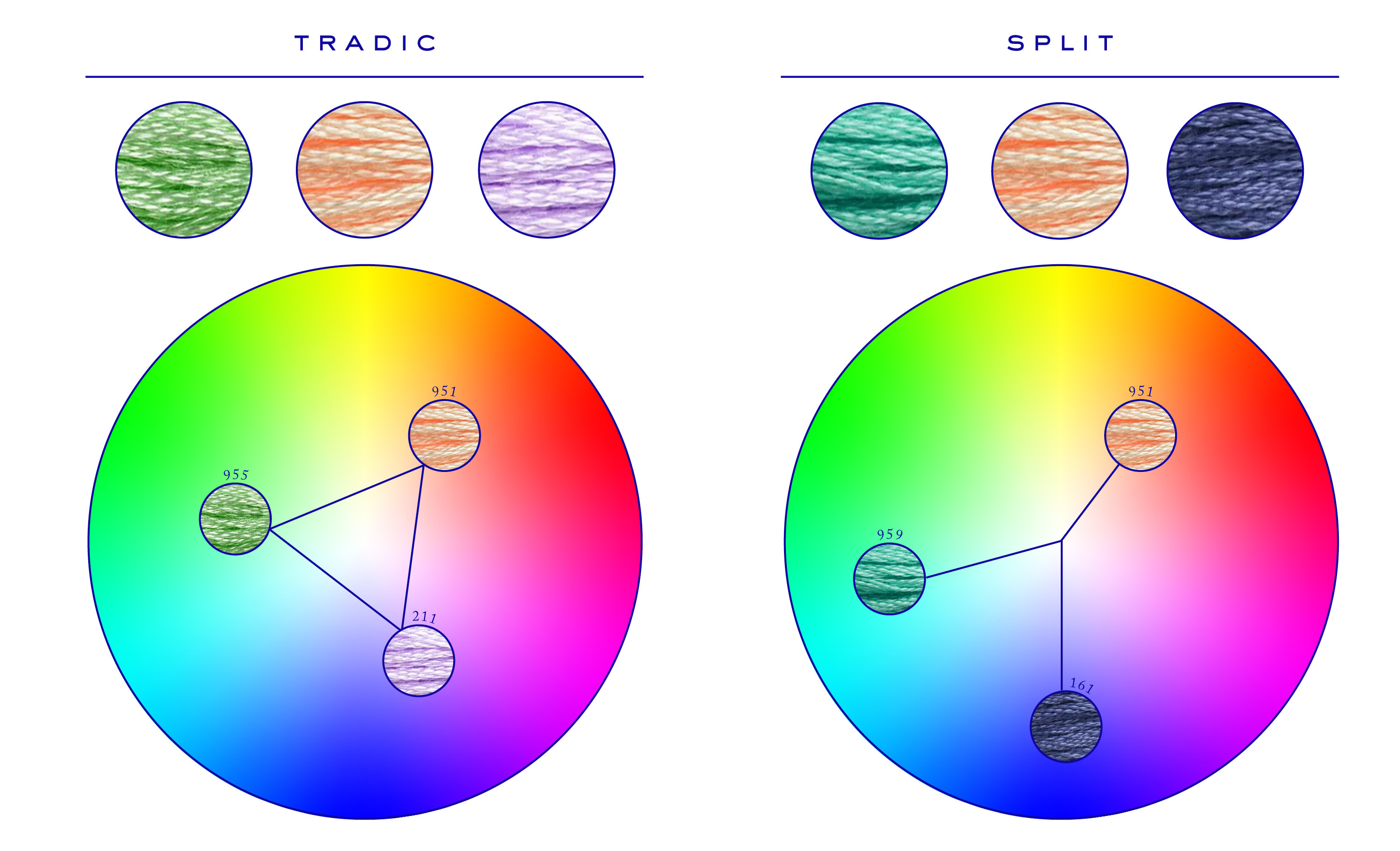
We hope you’ll enjoy experimenting with lots of other colours that work well with all the different peach threads and yarns so you can enjoy this trend in 2024.

